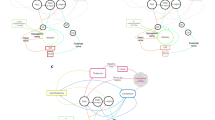Abstract
Four developmentally delayed babies were given semicircular canal stimulation in an effort to facilitate their motor and reflex development. Each of the children also exhibited abnormal stereotyped movements. The theory was advanced that these movements are related to motor development and that significant improvements in motor abilities will produce changes in the intensity and/or form of stereotypic responding. Semicircular canal stimulation was provided by rotating the children in a motor-driven chair at a velocity of about 17 rpm for 10 minutes daily over a period of 2 weeks. Standard motor and reflex measures were taken before, during, and after the rotation treatment period. Daily observations were made of the children's stereotyped movements. Over the course of the study all of the children showed motor and/or reflex changes that were attributable to the vestibular stimulation. In addition, some evidence was obtained linking changes in stereotypic responding to the vestibular stimulation.
Similar content being viewed by others
Reference note
Clark, D. L., Chee, F. K. W., Kantner, R. M., & Kreutzberg, J. R.Evaluation of motor skills in the preambulatory child. Unpublished manuscript, Ohio State University, 1980.
References
Baumeister, A. A. Origins and control of stereotyped movements. In C. E. Meyers (Ed.),Quality of life in severely and profoundly mentally retarded people: Research foundations for improvement. Washington, D.C.: American Association on Mental Deficiency, 1978.
Berkson, G. Visual defect does not produce stereotyped movements.American Journal of Mental Deficiency, 1973,78, 89–94.
Chee, F. K. W., Kreutzberg, J. R., & Clark, D. L. Semicircular canal stimulation in cerebral palsied children.Physical Therapy, 1978,58, 1071–1075.
Clark, D. L., Kreutzberg, J. R., & Chee, F. K. W. Vestibular stimulation influence on motor development in infants.Science, 1977,196, 1228–1229.
Cook, T. D., & Campbell, D. T.Quasi-experimentation. Design and experimentation. Design and analysis issues for field settings. Chicago: Rand McNally, 1979.
Crome, T. D., Cowie, V., & Slater, E. A statistical note on cerebellar and brain-stem weight in mongolism.Journal of Mental Deficiency Research, 1968,10, 69–72.
deLissovoy, V. Head banging in early childhood: A study of incidence.Journal of Pediatrics, 1961,58, 803–805.
Donoghue, E. C., Kirman, B. H., Bullmore, G. H. C., Laban, D., & Abbas, K. A. Some factors affecting age of walking in a mentally retarded population.Developmental Medicine and Child Neurology, 1970,12, 781–792.
Eastham, R. D., & Jancar, J.Clinical pathology in mental retardation. Bristol: John Wright, 1968.
Greenhouse, S. W., & Geisser, S. On methods in the analysis of profile data.Psychometrika, 1959,24, 95–112.
Griffiths, R.The abilities of babies. Amersham, Bucks, England: Association for Research in Infant and Child Development, 1976.
Kantner, R. M., Clark, D. L., Allen, L. C., & Chase, M. F. Effects of vestibular stimulation on nystagmus response and motor performance in the developmentally delayed infant.Physical Therapy, 1976,56, 414–421.
Kravitz, H., & Boehm, J. J. Rhythmic habit patterns in infancy: Their sequence, age of onset, and frequency.Child Development, 1971,42, 399–413.
Kravitz, H., Rosenthal, V., Teplitz, Z., Murphy, J., & Lesser, R. A study of headbanging in infants and children.Diseases of the Nervous System, 1960,21, 203–208.
Kreutzberg, J. R. Effects of vestibular stimulation on the reflex and motor development in normal infants (Doctoral dissertation, Ohio State University, 1976).Dissertation Abstracts International, 1976,37, 2013B. (University Microfilms No. 76-24, 631)
Lourie, R. S. The role of rhythmic patterns in childhood.American Journal of Psychiatry, 1949,105, 653–660.
MacLean, W. E., Jr., & Baumeister, A. A. Observational analysis of the stereotyped mannerisms of a developmentally delayed infant.Journal of Applied Research in Mental Retardation, 1981,2, 257–262.
Mason, W. A., & Berkson, G. Effects of maternal mobility on the development of rocking and other behaviors in rhesus monkeys: A study with artificial mothers.Developmental Psychobiology, 1975,8, 197–211.
Molnar, G. E. Analysis of motor disorder in retarded infants and young children.American Journal of Mental Deficiency, 1978,83, 213–222.
Rimland, B.Infantile autism. New York: Appleton-Century-Crofts, 1964.
Sallustro, F., & Atwell, C. W. Body rocking, head-banging, and head-rolling in normal children.Journal of Pediatrics, 1978,93, 704–708.
Thelen, E. Rhythmical stereotypies in normal human infants.Animal Behaviour, 1979,27, 699–715.
Thelen, E. Determinants of amounts of stereotyped behavior in normal human infants.Ethology and Sociobiology, 1980,1, 141–150.
Warren, S. A., & Burns, N. R. Crib confinement as a factor in repetitive and stereotyped behavior in retardates.Mental Retardation, 1970,8, 25–28.
Author information
Authors and Affiliations
Additional information
This work was supported by PHS Grant Nos.HD15051 and HD13344.
Rights and permissions
About this article
Cite this article
MacLean, W.E., Baumeister, A.A. Effects of vestibular stimulation on motor development and stereotyped behavior of developmentally delayed children. J Abnorm Child Psychol 10, 229–245 (1982). https://doi.org/10.1007/BF00915943
Revised:
Issue Date:
DOI: https://doi.org/10.1007/BF00915943




